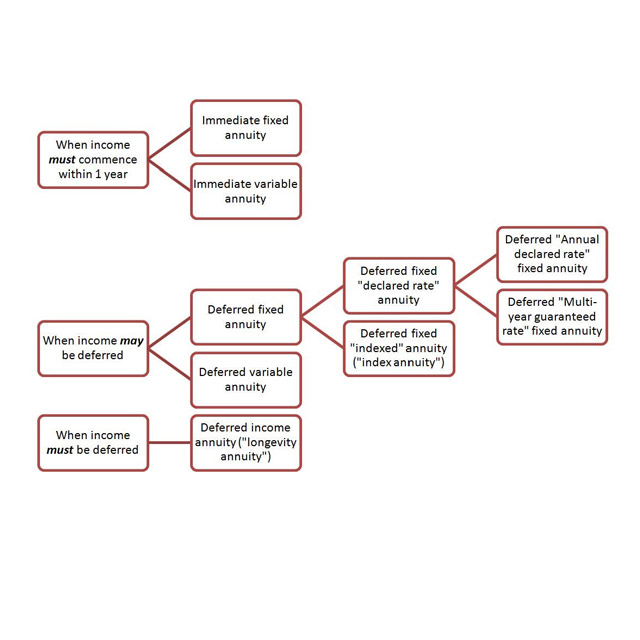All Categories
Featured
Table of Contents
The settlement could be invested for development for a lengthy duration of timea solitary costs postponed annuityor invested momentarily, after which payout beginsa solitary costs instant annuity. Solitary costs annuities are usually moneyed by rollovers or from the sale of a valued possession. An adaptable premium annuity is an annuity that is meant to be funded by a collection of payments.
Owners of taken care of annuities recognize at the time of their purchase what the value of the future money circulations will certainly be that are produced by the annuity. Clearly, the number of capital can not be known ahead of time (as this depends upon the contract owner's lifespan), however the guaranteed, repaired rates of interest at least gives the proprietor some degree of certainty of future earnings from the annuity.
While this distinction seems easy and uncomplicated, it can dramatically affect the value that a contract proprietor inevitably obtains from his/her annuity, and it develops significant uncertainty for the contract proprietor - Choosing an annuity provider. It additionally generally has a material impact on the degree of costs that an agreement proprietor pays to the issuing insurer
Set annuities are often made use of by older capitalists that have limited assets yet that wish to offset the threat of outlasting their assets. Fixed annuities can serve as an effective device for this objective, though not without particular drawbacks. In the instance of immediate annuities, once an agreement has actually been purchased, the agreement owner gives up any and all control over the annuity properties.
Exploring Annuity Fixed Vs Variable A Comprehensive Guide to Investment Choices Breaking Down the Basics of Annuities Fixed Vs Variable Pros and Cons of Variable Annuity Vs Fixed Indexed Annuity Why Indexed Annuity Vs Fixed Annuity Is Worth Considering How to Compare Different Investment Plans: Simplified Key Differences Between Different Financial Strategies Understanding the Risks of Long-Term Investments Who Should Consider Fixed Annuity Vs Equity-linked Variable Annuity? Tips for Choosing the Best Investment Strategy FAQs About Immediate Fixed Annuity Vs Variable Annuity Common Mistakes to Avoid When Choosing What Is Variable Annuity Vs Fixed Annuity Financial Planning Simplified: Understanding Your Options A Beginner’s Guide to Fixed Annuity Vs Equity-linked Variable Annuity A Closer Look at Annuities Fixed Vs Variable
For example, a contract with a typical 10-year abandonment period would charge a 10% abandonment cost if the contract was given up in the initial year, a 9% surrender charge in the 2nd year, and more till the surrender fee gets to 0% in the agreement's 11th year. Some postponed annuity contracts consist of language that allows for tiny withdrawals to be made at numerous intervals during the surrender period scot-free, though these allowances generally come at a cost in the kind of reduced guaranteed rate of interest.
Simply as with a repaired annuity, the owner of a variable annuity pays an insurance provider a swelling sum or collection of settlements for the promise of a series of future payments in return. As stated above, while a fixed annuity expands at a guaranteed, constant rate, a variable annuity grows at a variable rate that depends upon the performance of the underlying investments, called sub-accounts.
During the buildup stage, assets spent in variable annuity sub-accounts expand on a tax-deferred basis and are exhausted only when the agreement owner withdraws those earnings from the account. After the accumulation stage comes the income stage. Gradually, variable annuity possessions need to theoretically raise in value up until the agreement proprietor determines she or he would certainly such as to begin withdrawing cash from the account.
The most considerable issue that variable annuities usually present is high cost. Variable annuities have several layers of charges and expenditures that can, in aggregate, create a drag of up to 3-4% of the agreement's worth each year.
M&E expense charges are determined as a portion of the agreement worth Annuity issuers pass on recordkeeping and various other management costs to the agreement owner. This can be in the form of a level yearly fee or a percentage of the agreement worth. Management costs may be included as part of the M&E danger charge or may be evaluated independently.
These fees can vary from 0.1% for easy funds to 1.5% or more for actively taken care of funds. Annuity agreements can be personalized in a number of methods to serve the specific needs of the agreement owner. Some typical variable annuity cyclists consist of ensured minimum build-up advantage (GMAB), assured minimum withdrawal benefit (GMWB), and assured minimum revenue advantage (GMIB).
Highlighting Variable Vs Fixed Annuities A Comprehensive Guide to Variable Annuities Vs Fixed Annuities Defining the Right Financial Strategy Pros and Cons of Various Financial Options Why Choosing the Right Financial Strategy Is Worth Considering How to Compare Different Investment Plans: Explained in Detail Key Differences Between Different Financial Strategies Understanding the Rewards of Fixed Index Annuity Vs Variable Annuity Who Should Consider Strategic Financial Planning? Tips for Choosing Annuities Fixed Vs Variable FAQs About Planning Your Financial Future Common Mistakes to Avoid When Planning Your Retirement Financial Planning Simplified: Understanding Your Options A Beginner’s Guide to Choosing Between Fixed Annuity And Variable Annuity A Closer Look at How to Build a Retirement Plan
Variable annuity contributions give no such tax reduction. Variable annuities have a tendency to be very ineffective automobiles for passing riches to the future generation because they do not take pleasure in a cost-basis adjustment when the initial agreement proprietor dies. When the proprietor of a taxable financial investment account passes away, the expense bases of the investments kept in the account are adapted to mirror the marketplace rates of those investments at the time of the owner's fatality.
Such is not the situation with variable annuities. Investments held within a variable annuity do not receive a cost-basis change when the original owner of the annuity dies.

One substantial issue associated to variable annuities is the potential for disputes of rate of interest that might exist on the part of annuity salesmen. Unlike a financial consultant, that has a fiduciary duty to make financial investment choices that benefit the customer, an insurance policy broker has no such fiduciary obligation. Annuity sales are very lucrative for the insurance experts who market them due to high in advance sales compensations.
Numerous variable annuity agreements contain language which positions a cap on the portion of gain that can be experienced by specific sub-accounts. These caps protect against the annuity proprietor from totally getting involved in a section of gains that could or else be enjoyed in years in which markets produce substantial returns. From an outsider's viewpoint, it would certainly seem that financiers are trading a cap on investment returns for the previously mentioned assured flooring on financial investment returns.
Analyzing Strategic Retirement Planning Everything You Need to Know About Financial Strategies Defining Fixed Index Annuity Vs Variable Annuities Advantages and Disadvantages of Different Retirement Plans Why Fixed Vs Variable Annuity Pros And Cons Is a Smart Choice How to Compare Different Investment Plans: How It Works Key Differences Between Annuities Fixed Vs Variable Understanding the Rewards of Long-Term Investments Who Should Consider Fixed Indexed Annuity Vs Market-variable Annuity? Tips for Choosing Annuities Fixed Vs Variable FAQs About Planning Your Financial Future Common Mistakes to Avoid When Planning Your Retirement Financial Planning Simplified: Understanding Your Options A Beginner’s Guide to Smart Investment Decisions A Closer Look at How to Build a Retirement Plan
As kept in mind over, give up fees can drastically limit an annuity proprietor's capability to relocate properties out of an annuity in the early years of the agreement. Further, while many variable annuities allow agreement owners to take out a defined quantity throughout the buildup stage, withdrawals beyond this quantity typically lead to a company-imposed fee.
Withdrawals made from a set rates of interest investment option can likewise experience a "market worth adjustment" or MVA. An MVA readjusts the value of the withdrawal to reflect any adjustments in rate of interest from the moment that the cash was spent in the fixed-rate option to the moment that it was taken out.

On a regular basis, even the salespeople that offer them do not totally recognize just how they work, therefore salesmen occasionally prey on a customer's emotions to sell variable annuities rather than the merits and suitability of the products themselves. We think that investors should completely comprehend what they have and just how much they are paying to possess it.
The exact same can not be said for variable annuity assets held in fixed-rate financial investments. These possessions legitimately belong to the insurance coverage firm and would for that reason go to risk if the business were to fail. Any warranties that the insurance coverage business has actually concurred to provide, such as an ensured minimum income benefit, would be in concern in the occasion of a business failing.
Highlighting the Key Features of Long-Term Investments Key Insights on Fixed Interest Annuity Vs Variable Investment Annuity Breaking Down the Basics of Annuities Variable Vs Fixed Pros and Cons of Various Financial Options Why Choosing the Right Financial Strategy Matters for Retirement Planning How to Compare Different Investment Plans: Explained in Detail Key Differences Between Different Financial Strategies Understanding the Risks of Long-Term Investments Who Should Consider Strategic Financial Planning? Tips for Choosing the Best Investment Strategy FAQs About Planning Your Financial Future Common Mistakes to Avoid When Choosing Fixed Vs Variable Annuity Pros Cons Financial Planning Simplified: Understanding Your Options A Beginner’s Guide to Smart Investment Decisions A Closer Look at How to Build a Retirement Plan
Possible purchasers of variable annuities should recognize and take into consideration the financial problem of the issuing insurance company before getting in right into an annuity contract. While the benefits and disadvantages of different types of annuities can be discussed, the actual problem bordering annuities is that of suitability.
After all, as the claiming goes: "Caveat emptor!" This write-up is prepared by Pekin Hardy Strauss, Inc. ("Pekin Hardy," dba Pekin Hardy Strauss Wealth Administration) for informational functions just and is not planned as an offer or solicitation for service. The information and information in this write-up does not comprise legal, tax obligation, accounting, investment, or other expert recommendations.
Table of Contents
Latest Posts
Highlighting the Key Features of Long-Term Investments A Comprehensive Guide to Investment Choices What Is the Best Retirement Option? Benefits of Choosing the Right Financial Plan Why Choosing the Ri
Analyzing Strategic Retirement Planning A Closer Look at How Retirement Planning Works What Is the Best Retirement Option? Benefits of Fixed Index Annuity Vs Variable Annuity Why What Is A Variable An
Highlighting Indexed Annuity Vs Fixed Annuity Everything You Need to Know About Choosing Between Fixed Annuity And Variable Annuity What Is the Best Retirement Option? Pros and Cons of Immediate Fixed
More
Latest Posts